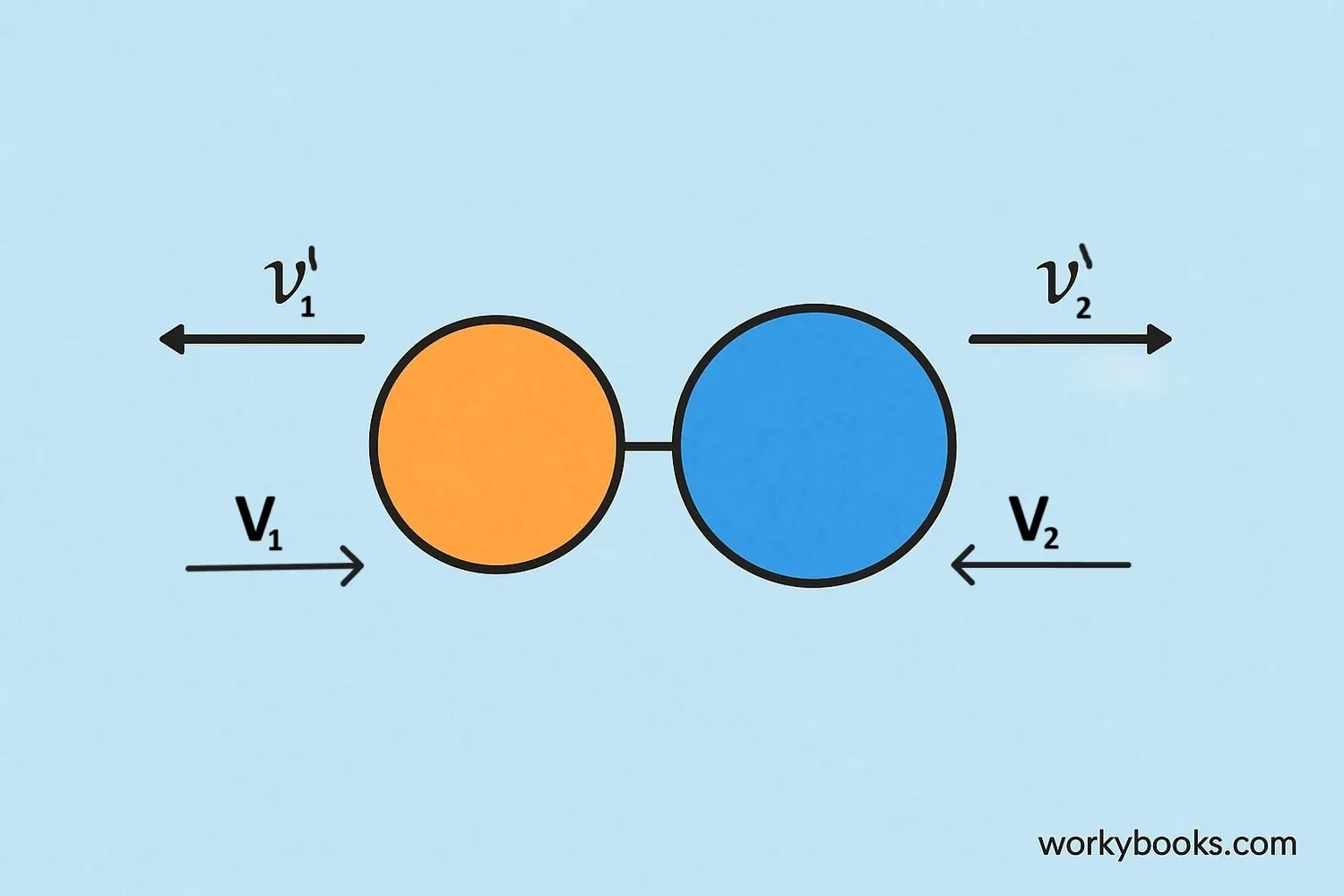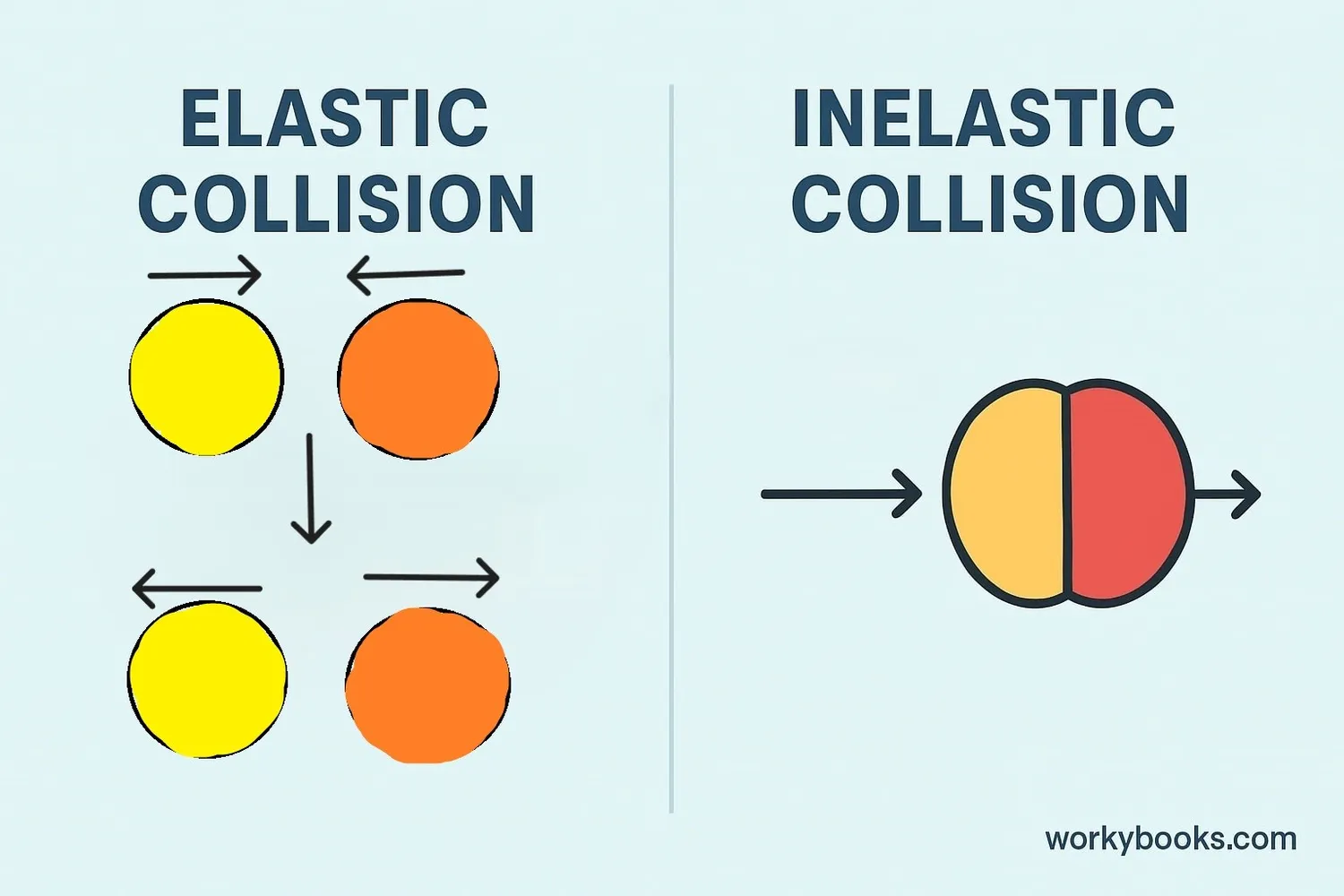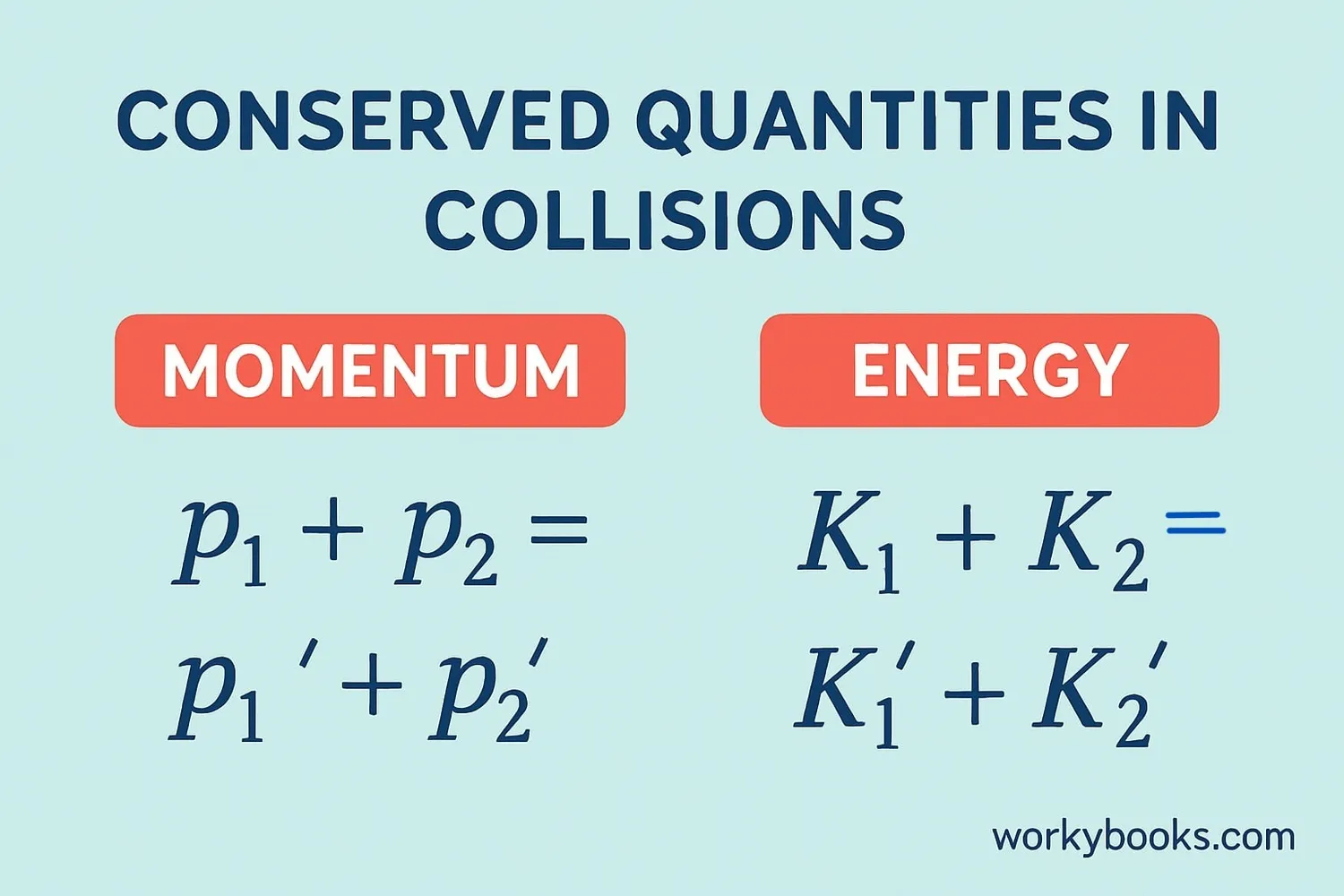Elastic Collisions - Definition, Examples, Quiz, FAQ, Trivia
Discover how objects bounce and exchange energy in physics!
What are Collisions?

In physics, a collision happens when two objects hit each other. But not all collisions are the same! Some collisions cause objects to bounce off each other, while others cause objects to stick together.
An elastic collision is a special type of collision where objects bounce off each other without losing any kinetic energy. The total energy and momentum are conserved, meaning they stay the same before and after the collision.
Real World Example!
When you play pool or billiards, the balls bounce off each other in nearly elastic collisions!
Types of Collisions

There are two main types of collisions:
Elastic Collision
Objects bounce off each other
Kinetic energy is conserved
Momentum is conserved
Inelastic Collision
Objects stick together or deform
Kinetic energy is NOT conserved
Momentum is conserved
Perfectly elastic collisions are ideal cases where no kinetic energy is lost at all. In the real world, most collisions are somewhat inelastic because some energy is always converted to other forms like heat or sound.
Bouncing Fact!
Superballs have very elastic collisions - they can bounce back to almost their original height!
Conservation Laws

Two important physics laws apply to collisions:
Conservation of Momentum
The total momentum before collision equals total momentum after collision
m₁v₁ + m₂v₂ = m₁v₁' + m₂v₂'
Conservation of Energy
In elastic collisions, kinetic energy is conserved
½m₁v₁² + ½m₂v₂² = ½m₁v₁'² + ½m₂v₂'²
In elastic collisions, both momentum and kinetic energy are conserved. In inelastic collisions, only momentum is conserved - some kinetic energy is transformed into other forms of energy.
Collision Formulas
For elastic collisions, we can calculate the velocities after collision using these formulas:
One-Dimensional Elastic Collision
For two objects moving along a straight line:
v₁' = [(m₁ - m₂)/(m₁ + m₂)]v₁ + [2m₂/(m₁ + m₂)]v₂
v₂' = [2m₁/(m₁ + m₂)]v₁ + [(m₂ - m₁)/(m₁ + m₂)]v₂
Coefficient of Restitution
A measure of how elastic a collision is:
e = (v₂' - v₁') / (v₁ - v₂)
For perfectly elastic collision: e = 1
For perfectly inelastic collision: e = 0
Two-Dimensional Elastic Collision
We break the motion into x and y components and apply conservation laws separately in each direction.
Collision Quiz
Test your knowledge about elastic collisions with this quiz! Answer all 5 questions to see how much you've learned.
Frequently Asked Questions
Here are answers to some common questions about elastic collisions:
Physics Trivia
Discover some amazing facts about collisions and physics!
Newton's Cradle
Newton's Cradle demonstrates conservation of momentum and energy through a series of elastic collisions. When one ball swings and hits the others, the last ball swings out with nearly the same velocity.
Cosmic Collisions
Elastic collisions happen constantly in space! Gas particles in nebulae collide elastically, and even galaxies can "collide" with stars passing through each other without actually colliding due to vast distances between stars.
Sports Physics
In tennis, the strings of a racket are designed to create more elastic collisions, transferring more energy to the ball. The "sweet spot" is where collisions are most elastic.
Particle Physics
At the subatomic level, particles like electrons collide elastically all the time. Scientists study these collisions to understand the fundamental building blocks of matter.


